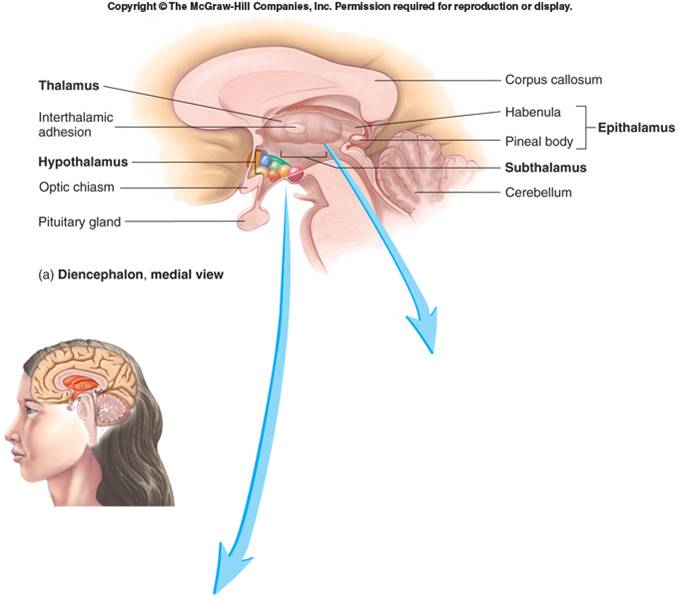Diencephalon
•Connects the brain to the brainstem: image above
•Components: thalamus, subthalamus, epithalamus, hypothalamus

Thalamus
•Sensory information from spinal cord synapses here before projecting to cerebrum
•Relay information to motor, mood, emotion, and sensory integration areas in the cerebral cortex
Subthalamus
•Involved in controlling motor function
•Contains subthalamic nuclei, parts of red nuclei and substantia nigra.
•Several ascending and descending nerve tracts
Epithalamus
•Pineal gland
–may influence sleepiness, helps regulate biological clock, may play a role in onset of puberty
–Role in emotional and visceral responses to odors
Hypothalamus
•Most inferior portion of diencephalon
•olfactory reflexes and emotional responses to odors
•Controls endocrine system.
•Receives input from viscera, taste receptors, limbic system, nipples, external genitalia, prefrontal cortex
•Efferent fibers to brainstem, spinal cord (autonomic system), to posterior pituitary, and to cranial nerves controlling swallowing and shivering
•Important in regulation of mood, emotion, sexual pleasure, satiation, rage, and fear

